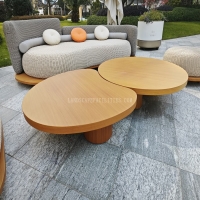Welcome to the website for landscape facilities products and knowledge.
What are the differences between rotational molding and injection molding for plastic landscape round trash cans?
When selecting manufacturing methods for plastic landscape round trash cans, two popular techniques stand out: rotational molding and injection molding. Each method offers distinct advantages and limitations, making them suitable for different applications.
Rotational Molding involves heating plastic powder inside a mold while rotating it to create a uniform, hollow product. This process is ideal for large, durable items like trash cans, as it produces seamless, stress-free parts with consistent wall thickness. Rotomolded trash cans are highly resistant to impact and weathering, making them perfect for outdoor use. However, the process is slower and less precise for intricate designs.
Injection Molding forces molten plastic into a mold under high pressure, allowing for faster production and intricate details. This method is cost-effective for high-volume manufacturing but may result in weaker seams and thinner walls, reducing durability for heavy-duty applications.
Key differences include:
- Durability: Rotational molding offers superior strength and longevity.
- Cost: Injection molding is cheaper for mass production.
- Design Flexibility: Injection molding allows for complex shapes, while rotational molding excels in simplicity and robustness.
Choosing between these methods depends on your priorities—durability and weather resistance favor rotational molding, while cost-efficiency and detail precision lean toward injection molding.
Related search:

Recommendation
Elliptical metal outdoor table with nested design, resembling wood grain, round table